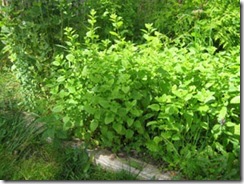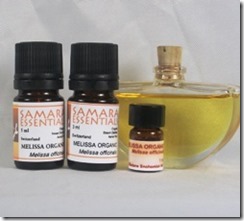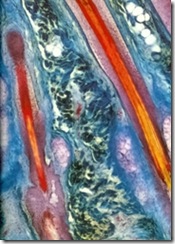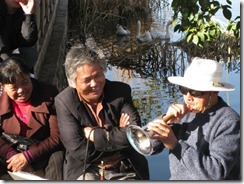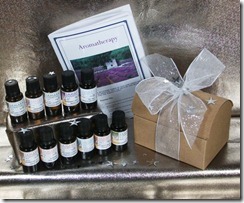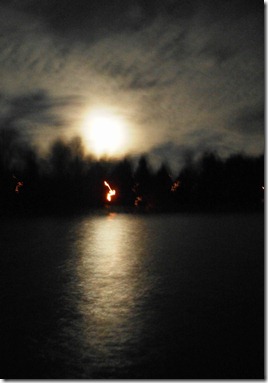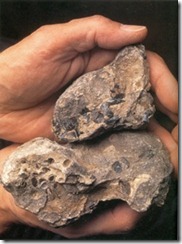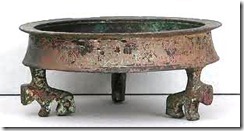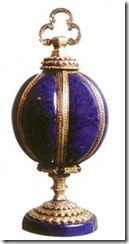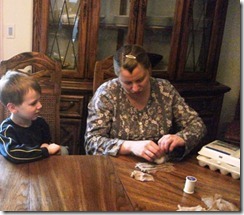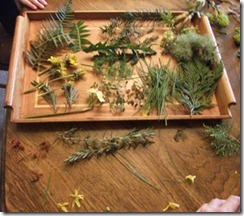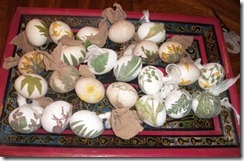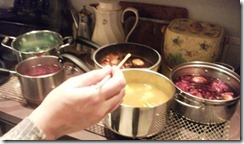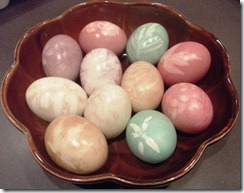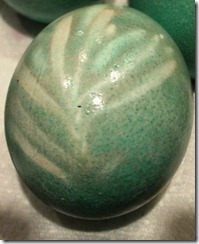“Why do bulls and horses turn up their nostrils when excited by love?” Darwin pondered deep in one of his unpublished notebooks. Scientists long ago documented a rich array of animal pheromones, everything from seal, fox and civet, various rodents, boars, beavers, musk deer . . . even the effluence discharged by whales. Discovering biochemical bouquets for attracting mates as well as marking territory and used for defense, as is the case with the noble skunk. And, we took them as our own for exotic and sought after perfumes, not putting much thought into human scent, assuming our unique evolution and poor sense of smell lends to the idea that unique olfactory-challenged, sight-oriented hairless bipeds would be the species that conquers the Earth. Hah!
deep in one of his unpublished notebooks. Scientists long ago documented a rich array of animal pheromones, everything from seal, fox and civet, various rodents, boars, beavers, musk deer . . . even the effluence discharged by whales. Discovering biochemical bouquets for attracting mates as well as marking territory and used for defense, as is the case with the noble skunk. And, we took them as our own for exotic and sought after perfumes, not putting much thought into human scent, assuming our unique evolution and poor sense of smell lends to the idea that unique olfactory-challenged, sight-oriented hairless bipeds would be the species that conquers the Earth. Hah!
I don’t doubt that many of my readers here, like myself, dismiss the notion that we humans are bereft of scent-driven socializing. That just because early scientists in autopsy couldn’t find the same hardware in humans, those two little pits, the VNO (vomeronasal organ) in each nostril, we had been left out of the savory realm of scent. So, our olfactory prowess was dismissed and discarded, those early analysts nodding their heads in agreement that humans simply did not rely on scent to any appreciable degree . . . and even physiologists declaring in the 1930’s that humans lacked the brain apparatus necessary to process VNO signals. So, even if we had a VNO, the thinking was our brains wouldn’t be able to interpret its signals.
So it goes, the scientific dogma for most of the previous century that humans do not rely on scent to any appreciable degree. I’m here to report that reports of our olfactory devolution have been greatly exaggerated! And, it will come as no surprise to readers here that physiologists did discover a functioning vomeronasal organ inside the human nose. Using microscopes unavailable to early nasal explorers, discovering pits lined with receptor cells that fire like mad when presented with certain substances. And probably less surprising that the discovery was prompted by a venture capitalist searching to cash in on manufactured human pheromones. Tom Tykwer’s 2006 movie Perfume: The Story of a Murderer, featuring Jean-Baptiste Grenouille’s dark quest for the ultimate perfume ingredient and its exquisite period sets could have us fantasizing a clever 17th century feminine entrepreneur doing a brisk business selling handkerchiefs scented with her body odor. Or, who knows, perhaps it is the next olfactory market evolution yet to come.
Getting back to smelling each other and our pleasure therein, it appears we are also profoundly equipped with attraction-beckoning pleasant odor-producing capability . . . human sweat, urine, saliva, breast milk, skin oils, breath and sexual secretions all contain scent-communicating chemical compounds. Zoologist Michael Stoddart, author of The Scented Ape, points out that humans possess denser skin concentrations of scent glands than almost any other mammal. We have long believed that humans don’t pay much attention to the fragrant or the rancid in their day-to-day lives. Part of the confusion resides in the fact that not all smells register in our conscious minds and that they are rejected when we don’t want to think about them anymore. In studying aromatherapy, we learn that our conscious mind can refuse to acknowledge the presence of odor, especially after prolonged periods of smelling it. We are, therefore, advised to diffuse in time periods according to other protocols and parameters not related to actively and consciously detecting the aromatic blend being diffused.
denser skin concentrations of scent glands than almost any other mammal. We have long believed that humans don’t pay much attention to the fragrant or the rancid in their day-to-day lives. Part of the confusion resides in the fact that not all smells register in our conscious minds and that they are rejected when we don’t want to think about them anymore. In studying aromatherapy, we learn that our conscious mind can refuse to acknowledge the presence of odor, especially after prolonged periods of smelling it. We are, therefore, advised to diffuse in time periods according to other protocols and parameters not related to actively and consciously detecting the aromatic blend being diffused.
As we study and learn more about DNA, there is a segment called the major histocompatibility complex (MHC), codes which function as the immune system’s eyes for recognition. This recognition triggers the immune system’s teeth – the killer T cells – who then swarm the intruders. Studies in mice have proven that females choose by evaluating males’ MHC profiles and choose those most dissimilar to their own to avoid inbreeding. It was during early studies involving humans that we discovered we were capable of discerning small differences in the immune systems of mice. This led to further tests in which women rated men’s body odor and sexiness . . . exactly like mice do. We much prefer men with scents that vary the most from our own.
Although, even that is complicated in that there are still anomalies to the general rule of choice yet to be definitely ascertained. Doctors have known since the mid-1980s that couples suffering repeated spontaneous abortions tend to share more MHC similarities than couples who carry to term. And, if we don’t also know and accept same sex attraction by now, we might remain in those dark, dank ages. Those who might be offended by the notion that animal senses play a role in their attraction to a partner need not worry. As the role of smell in human affairs yields to understanding, we see not that we are less human but that our tastes and emotions are far more complex and sophisticated than anyone ever imagined.
 While this ramble may give you something interesting you may not previously know, on this Valentines Day, you’re probably more interested in a simple bottle of perfume, rose-scented tea and the ever-beloved chocolate delight. Just remember, if you haven’t developed an awareness yet, while you are nibbling on that lover’s ear, to sniff a bit . . . and judge for yourself whether he/she is the one.
While this ramble may give you something interesting you may not previously know, on this Valentines Day, you’re probably more interested in a simple bottle of perfume, rose-scented tea and the ever-beloved chocolate delight. Just remember, if you haven’t developed an awareness yet, while you are nibbling on that lover’s ear, to sniff a bit . . . and judge for yourself whether he/she is the one.
Love and Smelly Kisses,
Marcia
 And so went my fb post of fierce resistance in response to the definitive gauntlet thrown . . . then Tina Sams from
And so went my fb post of fierce resistance in response to the definitive gauntlet thrown . . . then Tina Sams from 
